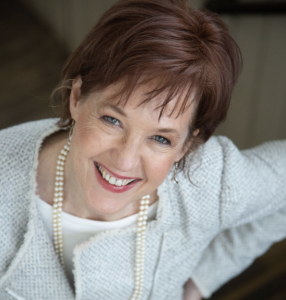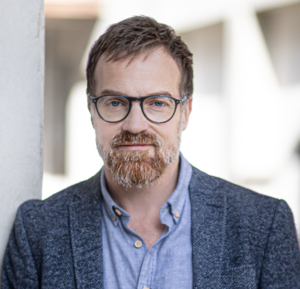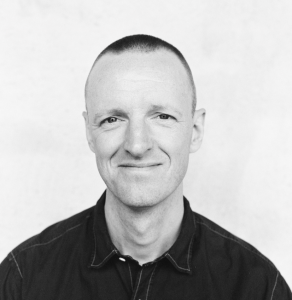KURSUSKALENDER
.
Her finder du en oversigt over kurser og uddannelse i ISTDP samt relaterede behandlingsformer i Danmark. Kalenderen holdes løbende ajour, og kursusarrangører er velkomne til at henvende sig til selskabet med henblik på at få kurser føjet til kalenderen.

- Denne begivenhed er allerede afholdt.
ISTDP-Akademiet 2023: Tami Chelew
3. maj 2023 kl. 17:00 - 19:30
De danske og svenske selskaber for ISTDP er glade for at kunne byde sine medlemmer velkomne til endnu et semester i ISTDP-Akademiet! Akademiet er vores fælles platform for fortsat læring og inspiration, med henblik på at bringe fores skandinaviske ISTDP-miljø sammen.
På vores kommende “semester” har vi fem spændende præsentationer forude – alle, som sædvanligt, den første onsdag i måneden kl 17.00 til 19.30, online via zoom:
Februar: Patricia Coughlin (US)
Marts: Brian Kok Ravn (DK)
April: Jody Clarke (CA)
Maj: Tami Chelew (US)
Juni: Niklas Rasmussen (SE)
Yderligere detaljer om oplæggene er på vej. Tilmelding er mulig for medlemmer af enten det svenske eller danske selskab for ISTDP. Det er derfor vigtigt, at deltagere også køber og betaler medlemskab af sit respektive selskab inden semesterstart. Ellers er tilmelding ugyldig. Medlemskab af det danske selskab kan fornyes her: https://istdp-danmark.dk/store/
Bemærk, at vi ligeledes i år har et “opvarmnings-seminar” med Johannes Kieding den 9. januar. Deltagelse er gratis, men kræver ligeledes medlemskab af et af vores to selskaber. Mere information kan findes her: https://fb.me/e/1EbzdubFw
Hjælp os meget gerne med at sprede ordet om ISTDP-Akademiet til kolleger i det skandinaviske ISTDP-miljø. Vi ses til februar!
Detaljeret information om semesterets fem oplæg:
1. februar: Patricia Coughlin: “handling resistance without contributing to it”
Om P atricia: Patricia Coughlin, Ph.D., is a Clinical Psychologist with over 40 years of experience. Having trained with Habib Davanloo, she developed a specialty in ISTDP and has been a prominent teacher and supervisor in the field since the 1990s. In addition, she has written many articles, and four books, on theory and practice of ISTDP.
atricia: Patricia Coughlin, Ph.D., is a Clinical Psychologist with over 40 years of experience. Having trained with Habib Davanloo, she developed a specialty in ISTDP and has been a prominent teacher and supervisor in the field since the 1990s. In addition, she has written many articles, and four books, on theory and practice of ISTDP.
Om Patricias oplæg: In this webinar we will focus on the topic of “handling resistance without contributing to it”. ISTDP is a method of psychotherapy based on the theory of unconscious conflicts. All too often, therapists focus exclusively on defense and resistance and, in so doing, contribute to it. Davanloo taught us to identify and then intensify the patient’s conflict in such a way that they turn on and abandon their defenses in order to face their true feelings. This procedure is designed to create an intrapsychic crisis, which, when successful, unlocks the unconscious. Engaging in an interpersonal conflict with patients can lead to misalliances and drop outs. Learning to manage the twin forces of alliance and resistance, in order to facilitate an internal crisis and opening of the unconscious, is an essential skill to master.
1. marts: Brian Kok Ravn: “The Stuck Electrician – Working with Syntonic Character Defenses”
 Om Brian: I have been in the field as a clinical psychologist since 2006 and got my initial training working with outpatient psychiatry specifically focusing on personality disorders. I finished my Core Training with Ph.d. Patricia Coughlin in 2012 and went on to participate in Jon Fredericksons “Training for Trainers”. I started out teaching my first core group in 2015 and has since then started a new core group each year. I’ve been in supervision with Dr. Allan Abbass since 2015 and has twice presented cases with both fragile and high resistant patients at the Copenhagen Immersion seminar taught by Dr. Allan Abbass. Currently I work solely as a private practitioner in Psykolog Kok Ravn ApS with a broad range of topics doing both Individual ISTDP Psychotherapy, ISTDP Informed Couples Therapy, Supervision, Training and Individual and Group Dynamic Coaching for Businesspeople.
Om Brian: I have been in the field as a clinical psychologist since 2006 and got my initial training working with outpatient psychiatry specifically focusing on personality disorders. I finished my Core Training with Ph.d. Patricia Coughlin in 2012 and went on to participate in Jon Fredericksons “Training for Trainers”. I started out teaching my first core group in 2015 and has since then started a new core group each year. I’ve been in supervision with Dr. Allan Abbass since 2015 and has twice presented cases with both fragile and high resistant patients at the Copenhagen Immersion seminar taught by Dr. Allan Abbass. Currently I work solely as a private practitioner in Psykolog Kok Ravn ApS with a broad range of topics doing both Individual ISTDP Psychotherapy, ISTDP Informed Couples Therapy, Supervision, Training and Individual and Group Dynamic Coaching for Businesspeople.
Om Brians oplæg: Highly syntonic character defenses are quite a challenge for the therapist to work with. We will look into session fourteen in the fase of treatment where the patient through previous repeated clarification slowly begins to turn on his defenses and let feelings rise in the transference. It will be demonstrated how turning the patient against his own defenses with this kind of high resistance requires both pressure, clarification, challenge and head on collision in combination.
5. april: Jody Clarke: ” Opening the Family Tomb: A Study of the Intergenerational Transmission of Psychopathology”
 Om Jody: Jody Clarke is certified as a Psychospiritual Therapist with the Canadian Association of Spiritual Care (CASC), he is also a Professor of Pastoral Theology, at Atlantic School of Theology in Halifax. Through a series of wonderful incidents he was invited to his first symposium in Intensive Short Term Dynamic Psychotherapy two decades ago. From there he was invited to join Dr. Davanloo’s Supervision Group. Then from 2007 – 2020 Jody became a member of Dr. Davanloo’s Montreal Closed-Circuit Video Workshop. He has written and co-authored several papers integrating ISTDP with literature and events in history.
Om Jody: Jody Clarke is certified as a Psychospiritual Therapist with the Canadian Association of Spiritual Care (CASC), he is also a Professor of Pastoral Theology, at Atlantic School of Theology in Halifax. Through a series of wonderful incidents he was invited to his first symposium in Intensive Short Term Dynamic Psychotherapy two decades ago. From there he was invited to join Dr. Davanloo’s Supervision Group. Then from 2007 – 2020 Jody became a member of Dr. Davanloo’s Montreal Closed-Circuit Video Workshop. He has written and co-authored several papers integrating ISTDP with literature and events in history.
Om Jodys oplæg: Exploring the nature of the intergenerational transmission of psychopathology is fascinating on numerous fronts. The pathogenetic figure or figures contribute directly to the to the character of the resistance. Essentially, the family tomb does not want to be open. In this presentation we will watch the application of Davanloo’s ISTDP and the subsequent breakthrough into the family crypt. Davanloo’s theories are designed to free patients from the destructive forces in their lives, but his technique also offers liberation for ancestor’s long since buried.
3. maj: Tami Chelew: “ISTDP Informed Couples Therapy”
 Om Tami: I am a licensed marriage and family therapist in private practice in San Diego, CA. I originally trained as a couple’s therapist. I am a certified Emotionally Focused Couple (EFT), Supervisor and Therapist, Dually Certified in Accelerated Experiential Dynamic Psychotherapy (AEDP) for Individuals and Couples, and IEDTA Certified in Intensive Short Term Dynamic Psychotherapy (ISTDP). My background in EFT for Couples, AEDP, and ISTDP have all served me well in shaping and expanding my clinical skills and developing my efficiency and art as a psychotherapist. I am passionate about teaching and training motivated therapists in helping them become more effective at what they do. I offer both individual supervision and an ISTDP Informed Couples Monthly Training. My colleague Matt Jarvinen and I co-created the ISTDP San Diego Community offering online training with master EDT trainers to therapists globally to help spread the love and efficacy of ISTDP. I am the president of the IEDTA and have served on the IEDTA Board for the past 4 years My husband and I have been married for 33 years. We have two grown, strong daughters and two precious grandsons. To learn more, visit me at www.tamichelew.com
Om Tami: I am a licensed marriage and family therapist in private practice in San Diego, CA. I originally trained as a couple’s therapist. I am a certified Emotionally Focused Couple (EFT), Supervisor and Therapist, Dually Certified in Accelerated Experiential Dynamic Psychotherapy (AEDP) for Individuals and Couples, and IEDTA Certified in Intensive Short Term Dynamic Psychotherapy (ISTDP). My background in EFT for Couples, AEDP, and ISTDP have all served me well in shaping and expanding my clinical skills and developing my efficiency and art as a psychotherapist. I am passionate about teaching and training motivated therapists in helping them become more effective at what they do. I offer both individual supervision and an ISTDP Informed Couples Monthly Training. My colleague Matt Jarvinen and I co-created the ISTDP San Diego Community offering online training with master EDT trainers to therapists globally to help spread the love and efficacy of ISTDP. I am the president of the IEDTA and have served on the IEDTA Board for the past 4 years My husband and I have been married for 33 years. We have two grown, strong daughters and two precious grandsons. To learn more, visit me at www.tamichelew.com
Om Tamis oplæg: Many ISTDP and EDT therapists who work with both individuals and couples are naturally interested in learning how to effectively apply their work to couples from an ISTDP framework. Most current couples’ models do not work from a theory of unconscious anxiety, nor explicitly identify defense patterns and their costs as explicitly as ISTDP. Dr. Davanloo’s contribution to defense work and understanding the pathways of unconscious anxiety is incredibly relevant in working with couples; especially when the stimulus (often their partner) is sitting next to them in the room. Equally important is increasing a couple’s capacity towards experiencing and expressing their mixed feelings openly and honestly with one another. This builds capacity on many levels in both partners toward less defensiveness, greater anxiety regulation and affect tolerance toward emotional closeness in being less guarded and distant, and more open-hearted and connected, which is often their shared longings for couples’ treatment. The focus of this presentation is based both on theory and technique; ISTDP metapsychology and the application of ISTDP clinical skills by closely monitoring the response to intervention in each couple member. This will include monitoring each partner’s triangle of conflict and triangle of persons to better understand how each of their intrapsychic conflicts and/or low ego capacity is unconsciously contributing to their interpersonal conflicts causing their current symptoms and suffering. When each partner can better understand both their own and their partner’s dynamics, it helps build empathy between them and is a motivator for healthy change. We will view case material demonstrating how to effectively work with a couple when both partners have different ego capacities. Many couples are highly motivated and yet feel stuck in relational defeating patterns and high anxiety during times of conflict. We will look at how to work with the complexities of detachment, projective processes, repression, and cognitive-perceptual disruption in the room and we will witness the change processes as they unfold. We will be underscoring the 5 parameters in Dr. Allan Abbass’s work that comes from Dr. Davanloo’s Central Dynamic Sequence which serves as a road map for working with both individuals and couples. These include assessing the ego capacity of each partner by restructuring defense patterns of relating, moving from syntonic to dystonic defense patterns, restructuring anxiety pathways as needed, detecting any anxiety thresholds that are too high, and inviting the de-repression of feelings, to bring breakthroughs into the unconscious. Working actively on the “front of the system” activates both partner’s resistance systems, Complex Transference Feelings, along with the Conscious Therapeutic Alliance (CTA) and the Unconscious Therapeutic Alliance (UTA), which is the healing force in each couple member and therapist. This way of working offers a comprehensive psychotherapeutic couples treatment course that is effective and short-term. This presentation will show that working in this focused way, in the here-and-now, by monitoring anxiety dysregulation and building affect tolerance helps both partners to have more capacity to deal, feel and relate to one another in good times and in hard times. Also, honoring the urge of expressing loving impulses to reach out and hold hands or offer a much-needed comforting hug is welcomed. These tender, loving moments are meaningful to the couple and lead to further gains of deeper, honest communication and character change that offer corrective emotional experiences together. Learning Objectives include: 1. How to assess and psycho-diagnose the ego capacity of each couple member. 2. When and how to use Graded ISTDP interventions when detecting anxiety thresholds so that each partner can feel safe in their body and in the room with us and with each other to build more ego and relational capacity. 3. Witnessing the restructuring efforts so that resistances drop, and Alliance can grow and overcome resistance for both partners to feel more in contact with their mixed feelings and with each other. 4. How to explicitly privilege the felt emotion of love and other positive feelings to increase and deepen their emotional intimacy and attachment bond. You will witness and feel their love in the room. Reaching the couple stuck underneath their resistances by understanding and healing their unconscious wounds transforms their love through healthier ways of relating which positively impacts their children, their grandchildren, and the generations to come. To me, this is sacred legacy work. Working effectively with couples from an ISTDP framework can be a significant factor in contributing to the greater collective conscious healing in the couple and family system, society, and the world at large.
7. juni: Niklas Rasmussen: “Undervalued functions of the head-on collision in ISTDP”
 Om Niklas: Niklas Rasmussen is a licensed psychologist, a certified ISTDP therapist, trainer and supervisor. He has 15 years experience of clinical work, mainly in outpatient psychiatric health care. Since 2019 he has a private practice in Stockholm offering ISTDP therapy, ISTDP-training and supervision. He also teaches ISTDP at Uppsala University and at Marie Cederschiölds högskola i Stockholm
Om Niklas: Niklas Rasmussen is a licensed psychologist, a certified ISTDP therapist, trainer and supervisor. He has 15 years experience of clinical work, mainly in outpatient psychiatric health care. Since 2019 he has a private practice in Stockholm offering ISTDP therapy, ISTDP-training and supervision. He also teaches ISTDP at Uppsala University and at Marie Cederschiölds högskola i Stockholm
Om Niklas’ oplæg: Head-on collision (HOC) is usually described as an effective intervention when the patient’s resistance is crystallized. It is defined by a therapeutic position of radical honesty about the prize of the resistance. In ISTDP-litterature, the main goal with HOC is described as helping highly resistant patients towards emotional break-throughs. But the therapeutic stance associated with HOC can have multiple functions in the therapeutic process, such as: 1) assessing the patient’s suitability for ISTDP in trial therapy: 2) initiating termination of therapy when necessary. 3) establishing and reestablishing therapeutic borders in therapy. 4) a path to essential self-care for the therapist. In his presentation, Niklas will discuss these extended, and so far undervalued, functions of HOC based on his own experience as an ISTDP therapist, supervisor and supervisee. He will also talk about how HOC can be used at different stages of a therapist´s development and common countertransference reactions associated with the use of HOC.
